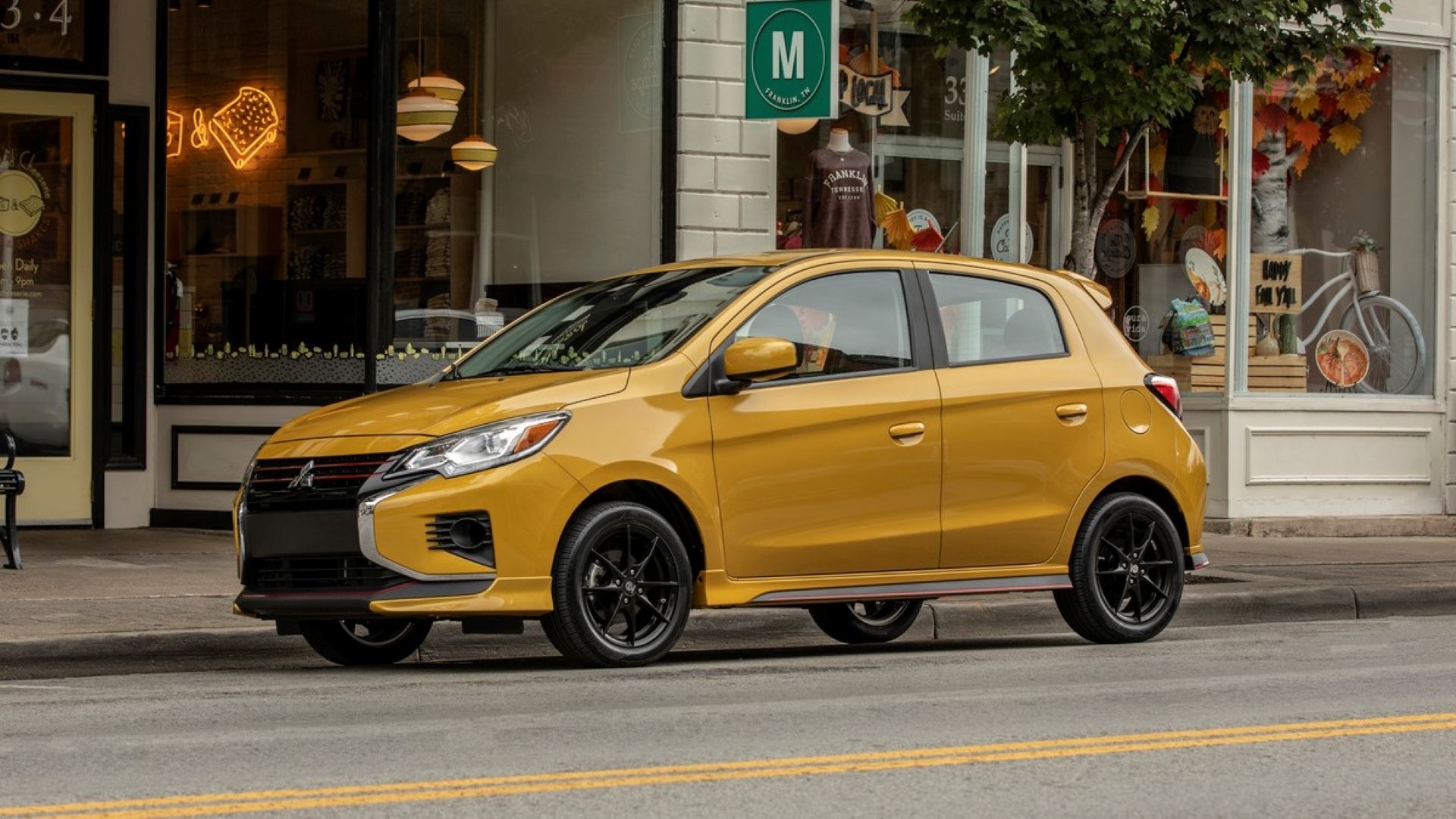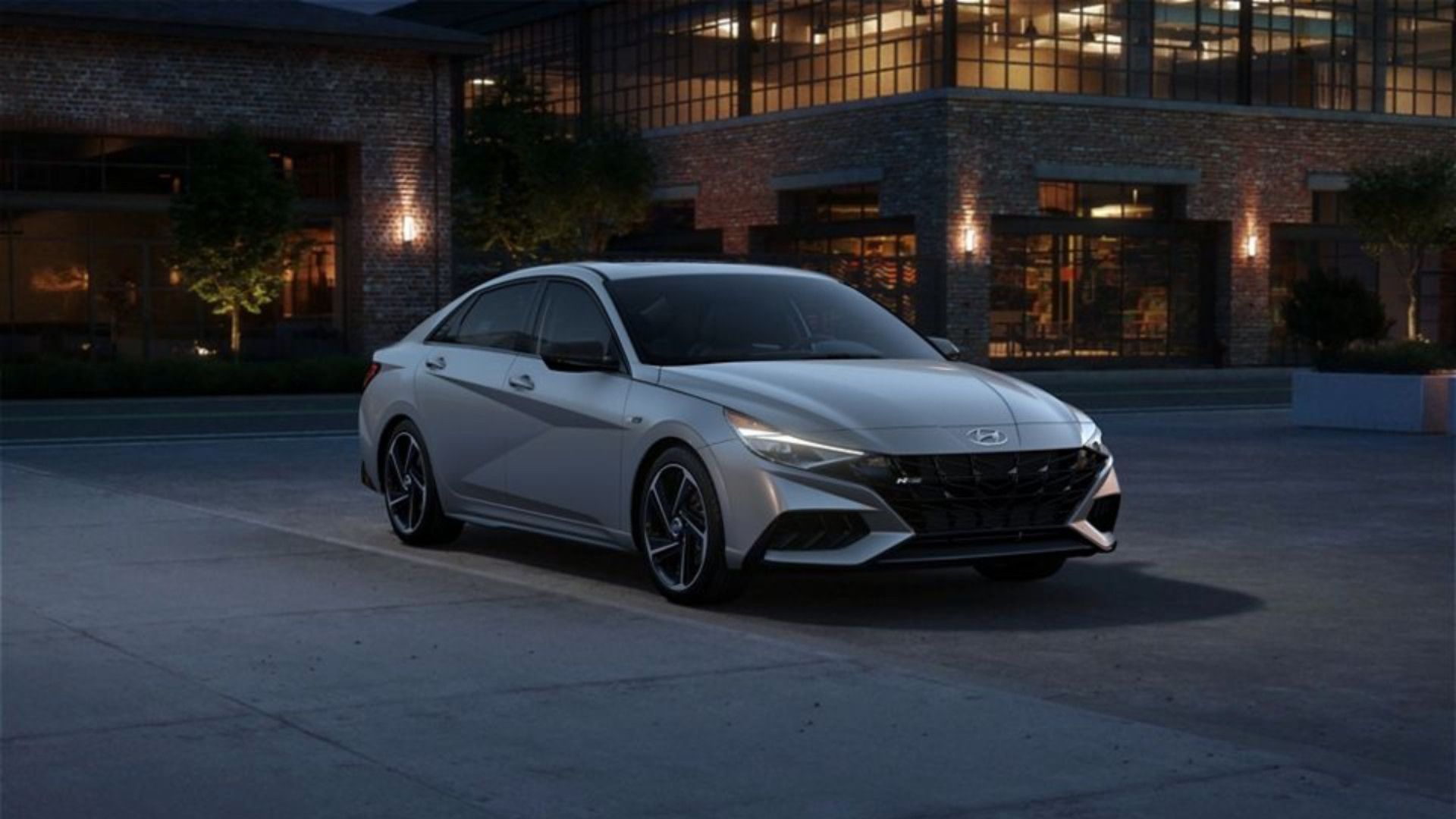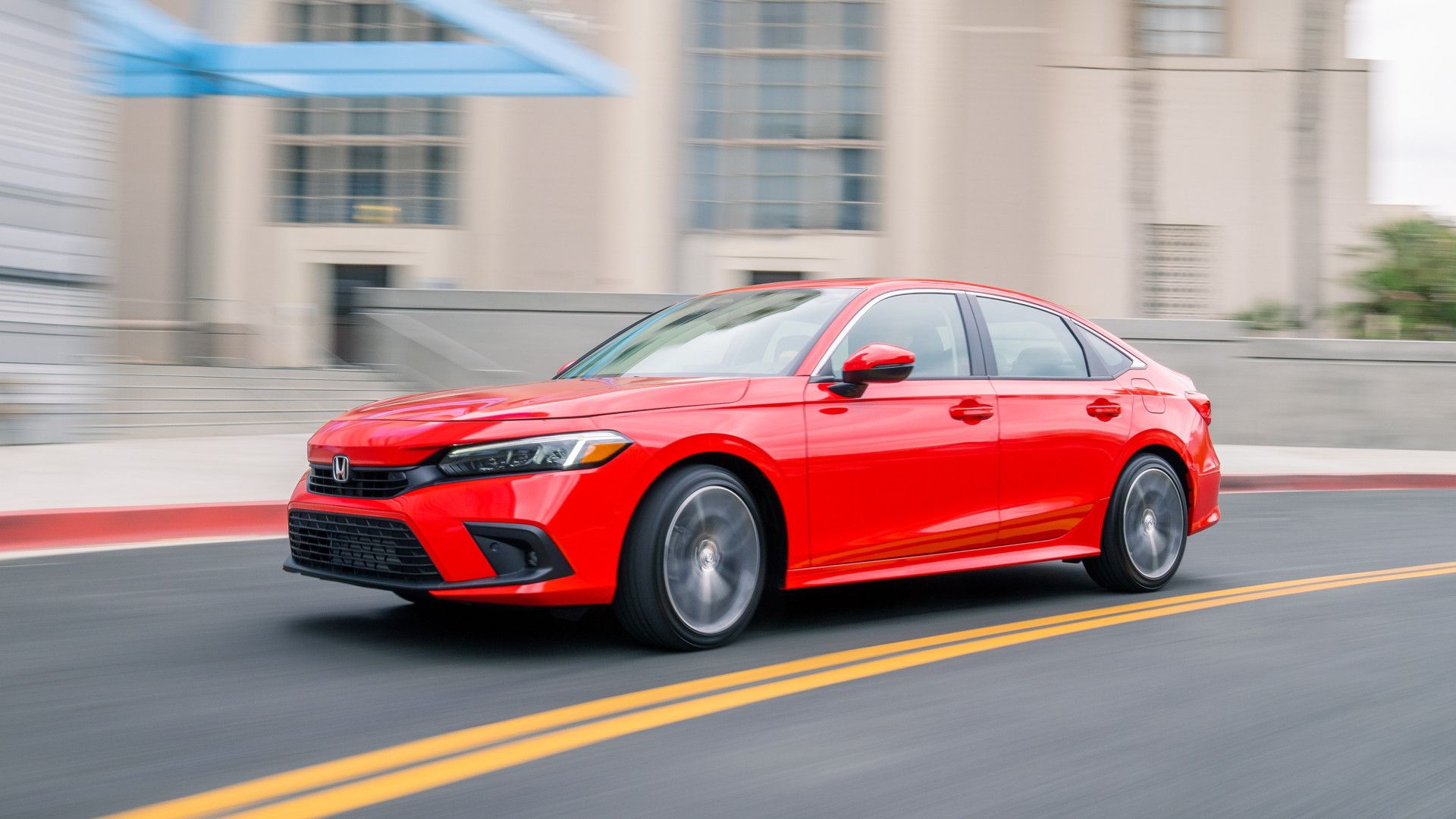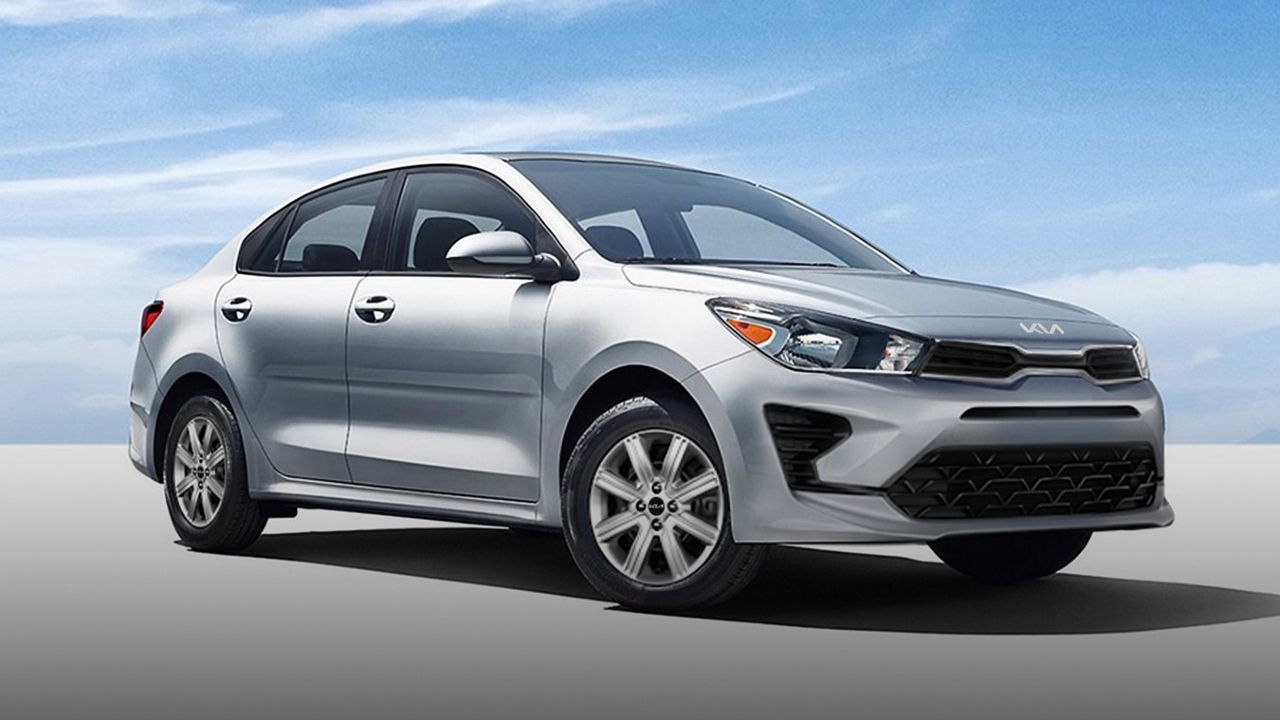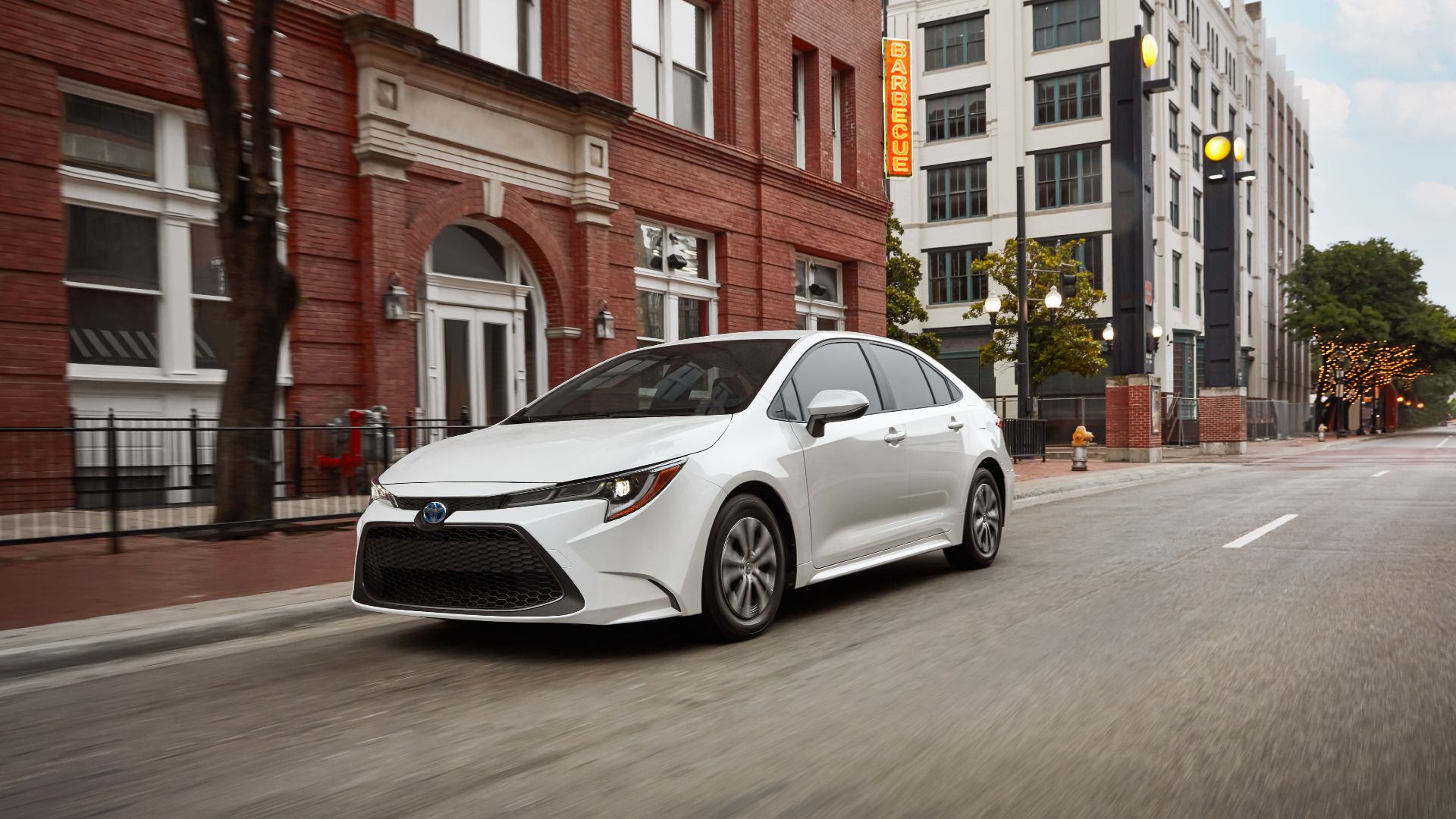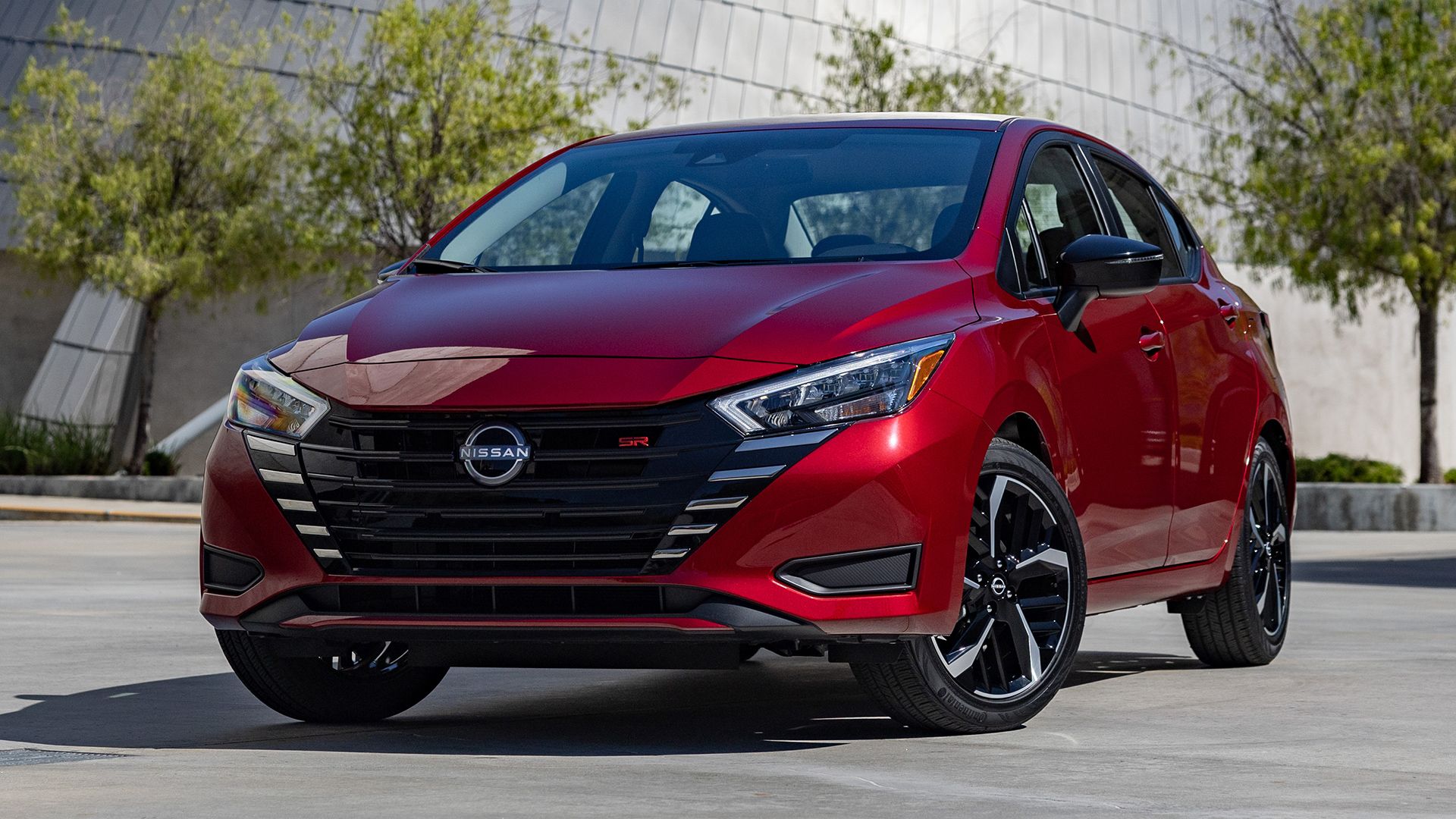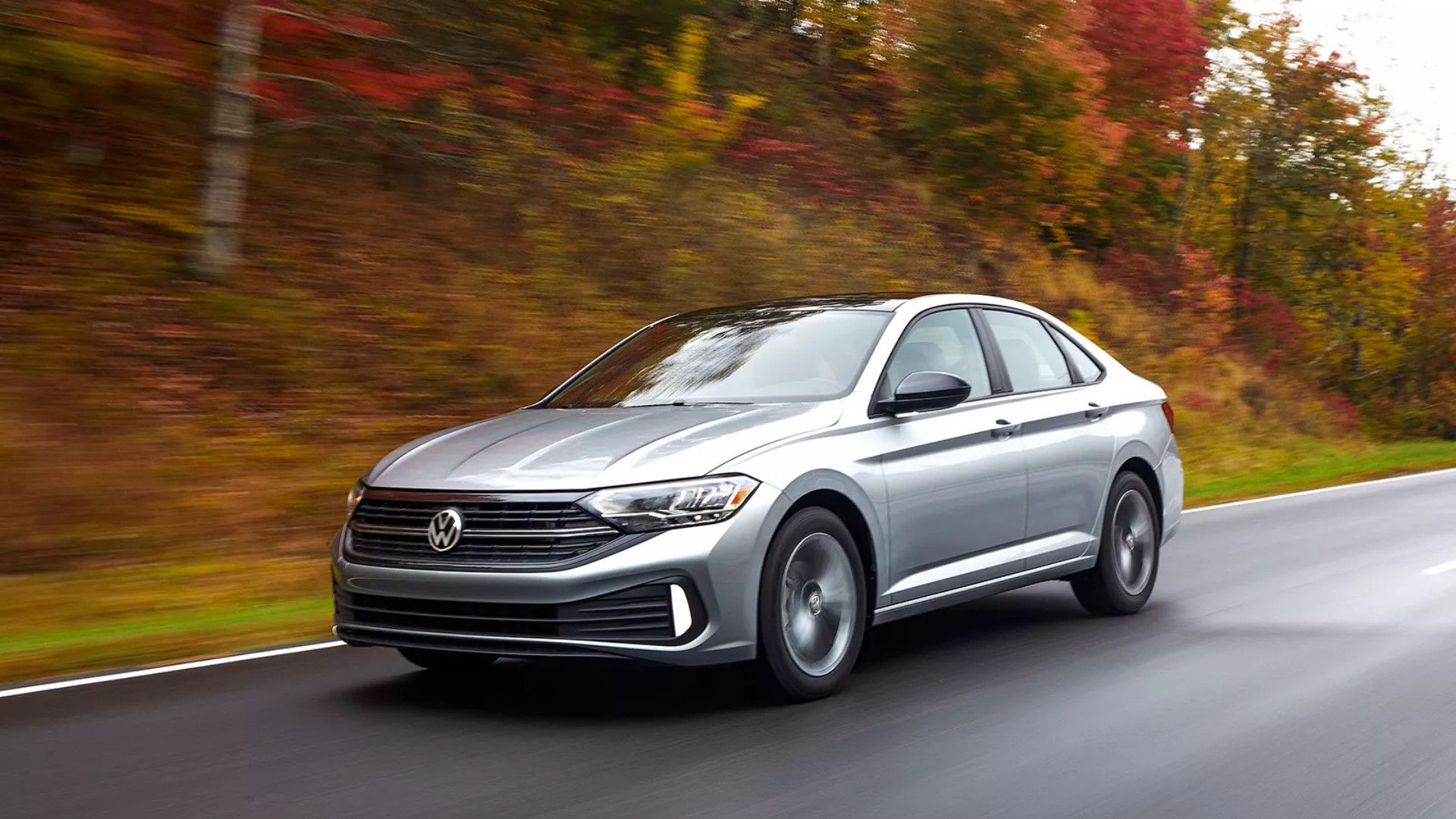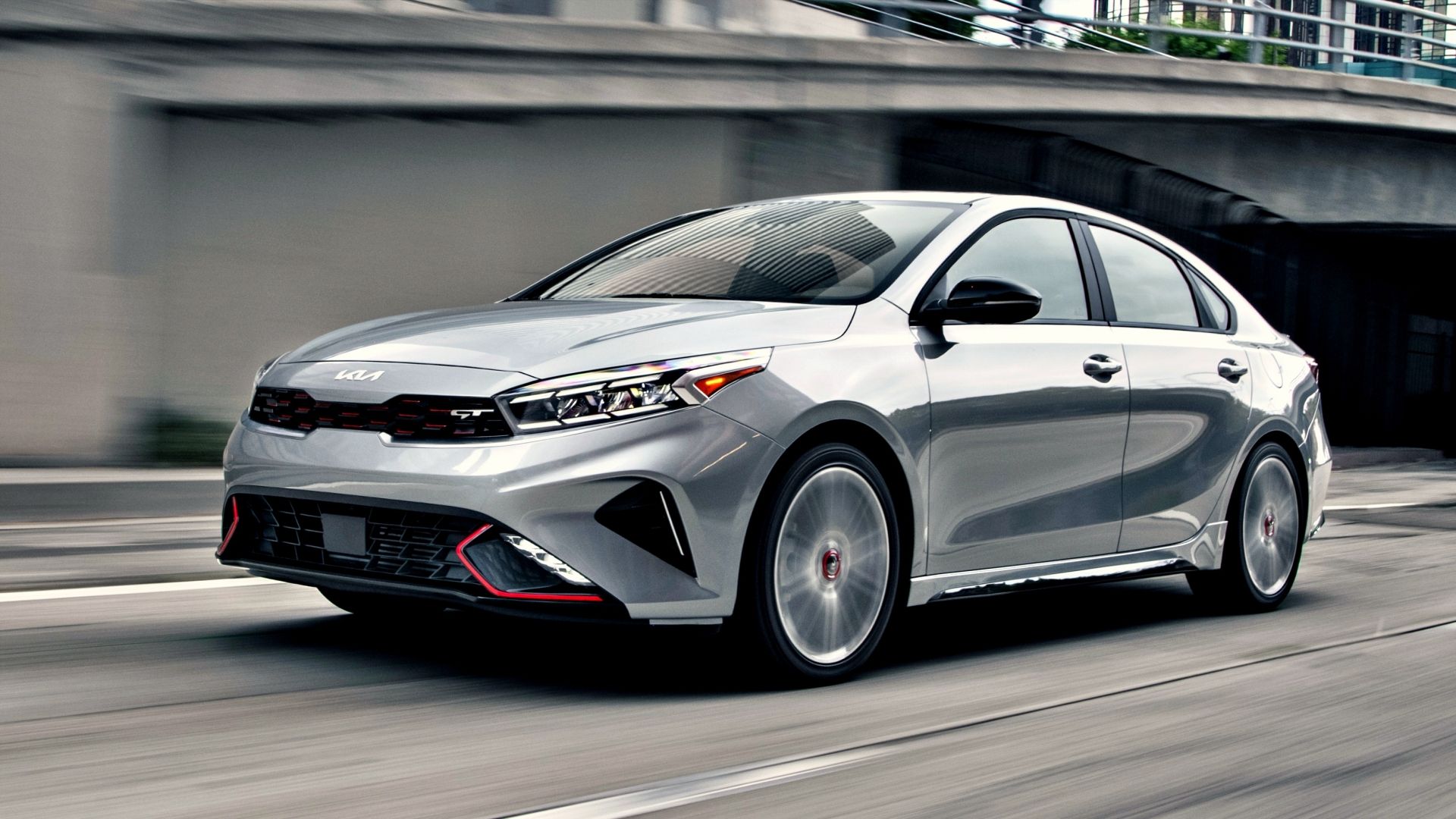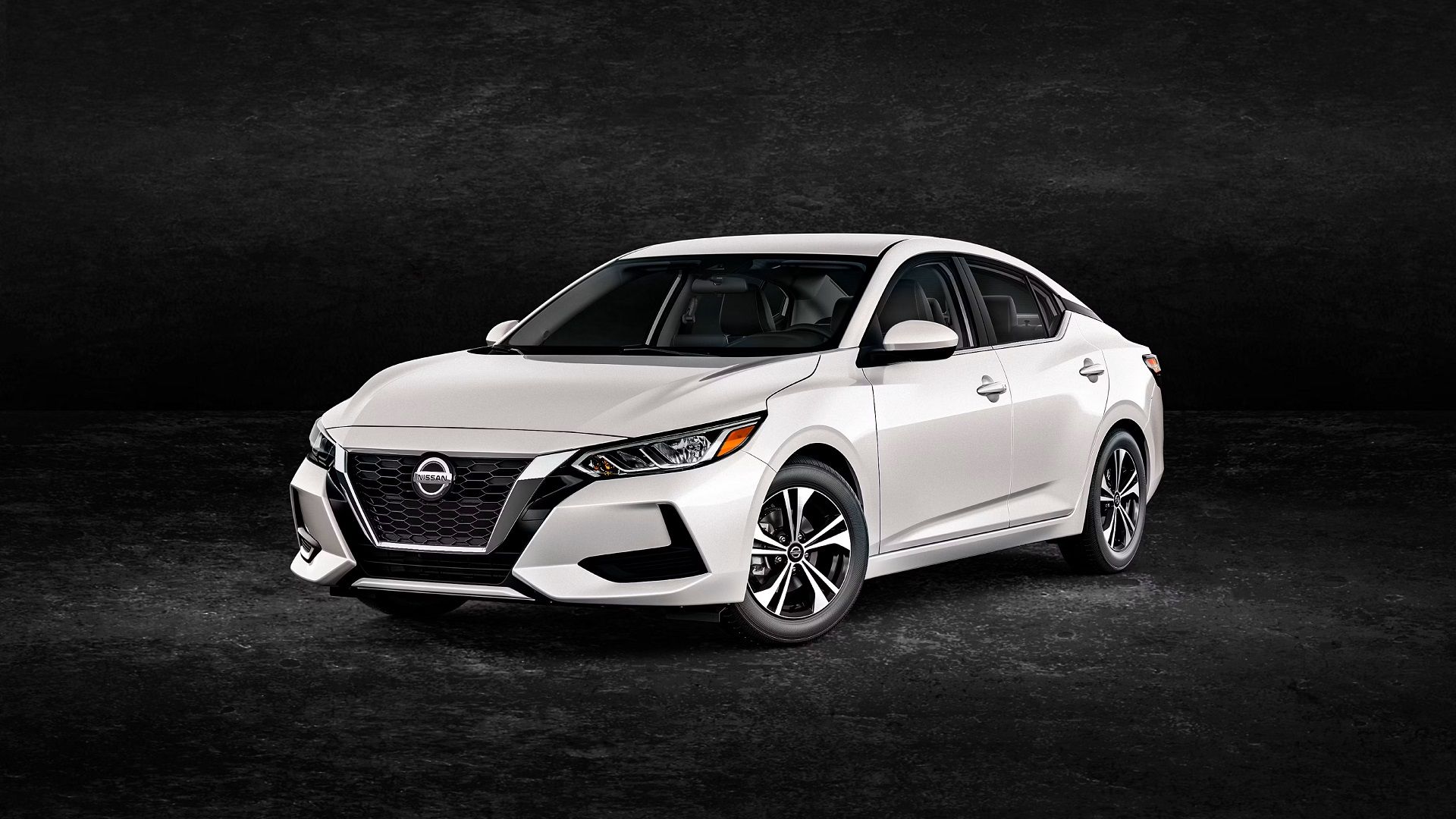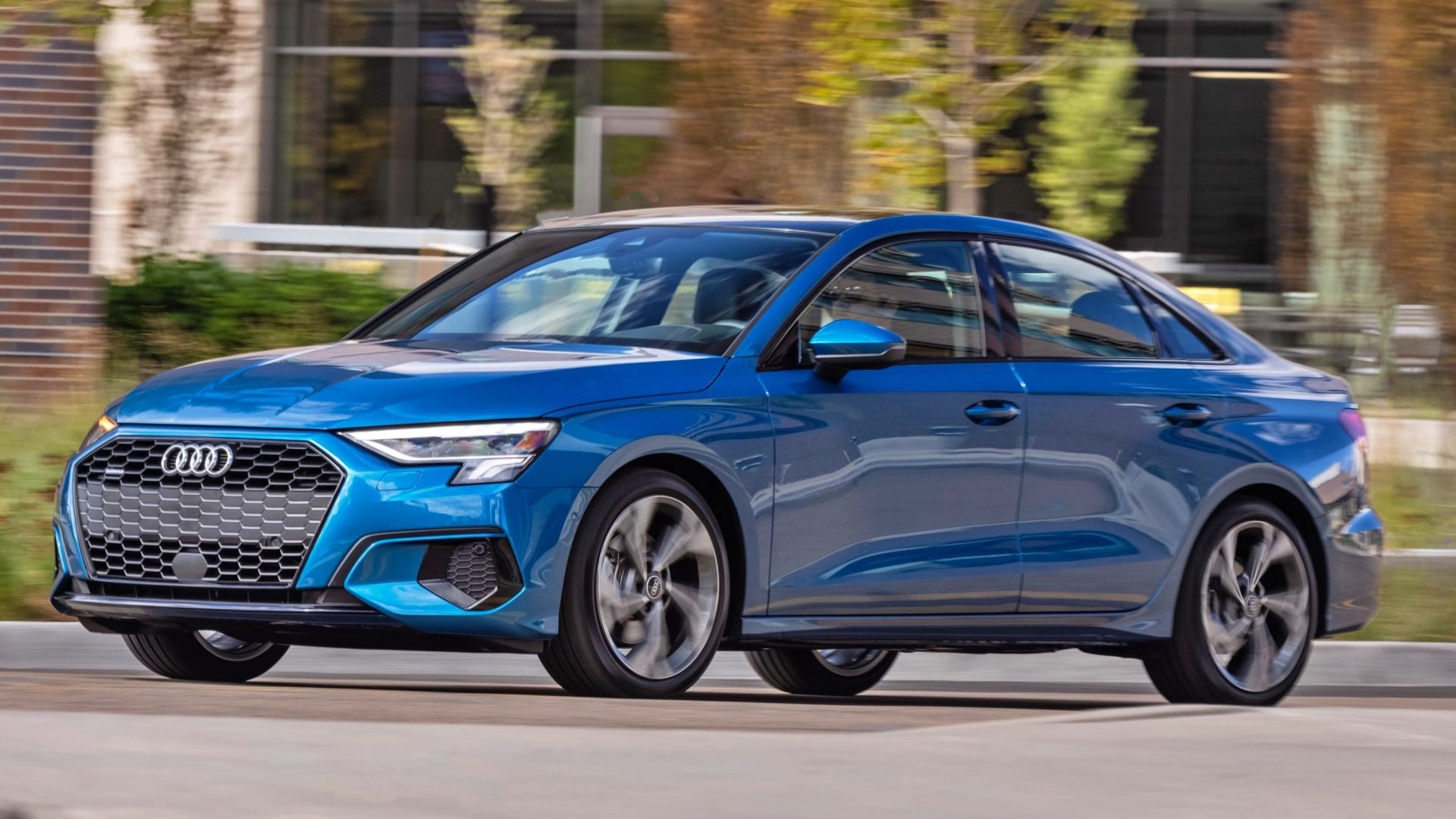There are many factors that play a role in whether a certain car is fuel efficient or not. Things like engine size, vehicle weight, transmission type, and aerodynamics can all affect how much fuel is saved, or in other cases, burned. With fully electric vehicles becoming more of a trend and hybrid vehicles being prominent for over a decade – all is not lost with gasoline-only cars when it comes to efficiency.
You probably don’t expect to see gasoline-only cars raking in MPG numbers close to 40, but this is totally possible. Cars like the Mitsubishi Mirage utilize very small engines, lighter materials, and an overall smaller car to allow for the best possible fuel efficiency while remaining significantly lower priced than most hybrids.
Using information from Fueleconomy.gov, we’ve compiled a list of the 10 most fuel-efficient non-hybrid cars.
10 Mitsubishi Mirage
Gas Mileage: 39 MPG
The Mitsubishi Mirage, being the most fuel-efficient and affordable non-hybrid car on this list, features a 1.2-liter three-cylinder engine with an automatic CVT (Continuously Variable Transmission). You can also opt for a five-speed manual transmission, however, this will lower the estimated fuel efficiency by approximately three MPG. With a 0-60 time of just under 11 seconds, this car is definitely not fast, but that isn’t what you want when looking for a fuel-efficient vehicle.
Fuel Economy And Running Costs
|
EPA-Estimated Fuel Economy |
39 MPG |
|
EPA-Estimated Range |
359 miles |
|
Annual Fuel Costs |
$1,400 |
|
Tank Capacity |
9.2 gallons |
On the inside, the interior is probably what you’d expect from a new car that starts around $13,830. It is a four-door car though, and it does offer basic features such as standard automated emergency braking with pedestrian detection, a touch-screen with Android Auto and Apple CarPlay, and around 17 cubic feet of cargo space. Once the rear seats are folded down, this rises to 47 cubic feet of space.
9 Hyundai Elantra
Gas Mileage: 37 MPG
The Hyundai Elantra is a car that has been produced and refined since the 1990s. For the year 2023, the Elantra features a 2.0-liter four-cylinder automatic along with a CVT transmission which allows this car to rest only a few MPG below the Mirage. 147 horsepower and 132 pound-feet of torque gives it enough power to get up and go when necessary, however, the 0-60 time is still a bit sluggish at 8.4 seconds.
Fuel Economy And Running Costs
|
EPA-Estimated Fuel Economy |
37 MPG |
|
EPA-Estimated Range |
459 miles |
|
Annual Fuel Costs |
$1,450 |
|
Tank Capacity |
12.4 gallons |
The Elantra is a safe car, featuring many driver assistance systems standard such as automated emergency braking with pedestrian detection, lane departure warning with lane-keeping assist, and adaptive cruise control with lane-centering feature. As far as creature comforts, you have the choice between an eight-inch or 10.3-inch infotainment display. Apple CarPlay and Android Auto come standard, as well as a Wi-Fi connection.
8 Honda Civic
Gas Mileage: 36 MPG
The Honda Civic is a great front-wheel drive sedan that offers comfort, reliability, and good fuel efficiency. It has a turbocharged 1.5-liter four-cylinder engine that makes 180 horsepower and 177 pound-feet of torque. With a 0-60 time of 7.5 seconds, you’ll have no problems merging and getting up to speed on the highway. A CVT transmission is also utilized to help obtain these fuel efficiency numbers.
Fuel Economy And Running Costs
|
EPA-Estimated Fuel Economy |
36 MPG |
|
EPA-Estimated Range |
446 miles |
|
Annual Fuel Costs |
$1,500 |
|
Tank Capacity |
12.4 gallons |
With a tank capacity of 12.4 gallons, you’ll notice that the range of the Honda Civic is among some of the highest on this list. This car also has standard features such as automated emergency braking, lane departure warning, lane keep assist, and adaptive cruise control. The interior is sleek and luxurious with an ample amount of cargo space. You have three options for screens, and a mesh inlay that extends throughout the dash hides the air vents.
7 Kia Rio
Gas Mileage: 36 MPG
The Kia Rio, being a sub-compact like the Mitsubishi Mirage, is another small but highly fuel-efficient non-hybrid car. This is another vehicle that can be had on a lower budget, albeit not as cheap as the Mirage – starting at $17,875. It has a 1.6-liter four-cylinder engine that makes 120 horsepower and 112 pound-feet of torque. Like many of the other models listed, a CVT transmission helps to achieve this fuel efficiency.
Fuel Economy And Running Costs
|
EPA-Estimated Fuel Economy |
36 MPG |
|
EPA-Estimated Range |
428 miles |
|
Annual Fuel Costs |
$1,500 |
|
Tank Capacity |
11.9 gallons |
An 8.0-inch touchscreen comes standard, with Apple CarPlay and Android Auto, while also featuring forward collision warning, automated emergency braking, plus lane departure warning and lane keep assist. Kia, similar to Hyundai, has great warranties – for example, the 10-year, 100,000-mile powertrain warranty on this car. The interior is nothing special, but does provide a simple, clean look that does not come across as super cheap.
6 Toyota Corolla
Gas Mileage: 35 MPG
The Toyota Corolla is a great-looking sedan that provides the satisfying experience that you’d expect from a Toyota. A 2.0 liter- four-cylinder engine produces 169 horsepower while still getting 32 to 41 MPG (average of 35MPG) depending on how you drive.
Fuel Economy And Running Costs
|
EPA-Estimated Fuel Economy |
35 MPG |
|
EPA-Estimated Range |
462 miles |
|
Annual Fuel Costs |
$1,550 |
|
Tank Capacity |
13.2 gallons |
The interior flaunts an elegant look and the car comes standard with many driver-assistance systems such as:
- Automatic high beams
- Road sign assist
- Forward collision warning
- Automated emergency braking
- Lane keep assist
- Adaptive cruise control
Overall, the Toyota Corolla provides great fuel efficiency without compromising comfort, style, or driver comfortability, making it a great non-hybrid option if you’re not worried about the four MPG difference when compared to the Mitsubishi Mirage.
5 Nissan Versa
Gas Mileage: 35 MPG
The Nissan Versa is another non-hybrid car with a sleek appearance. It features a smaller, 1.6-liter four-cylinder engine, and has the same average MPG as the Toyota Corolla. The engine makes 122 horsepower and 114 pound-feet of torque, while also having a 0-60 mph time of around 10 seconds. With this being said, you cannot expect to feel like a race car driver behind the wheel of the Versa, but you can expect to feel happy because you’re saving money on gasoline!
Fuel Economy And Running Costs
|
EPA-Estimated Fuel Economy |
35 MPG |
|
EPA-Estimated Range |
378 miles |
|
Annual Fuel Costs |
$1,550 |
|
Tank Capacity |
10.8 gallons |
An automatic CVT transmission is used, while the standard features are limited to front and rear automated emergency braking. There are optional upgrades, however, such as blind spot monitoring, cross-traffic alert, and adaptive cruise control. The interior presents more of a sporty look, with enough room to comfortably fit two adults in the rear.
4 Volkswagen Jetta
Gas Mileage: 35 MPG
The Volkswagen Jetta makes 158 horsepower and 184 pound-feet of torque with its turbocharged 1.5-liter four-cylinder engine. It comes standard with a manual six-speed transmission, however, you’ll want to opt for the 8-speed automatic for the best fuel efficiency. The car is front-wheel drive and has a fairly decent 0-60 time of seven seconds.
Fuel Economy And Running Costs
|
EPA-Estimated Fuel Economy |
35 MPG |
|
EPA-Estimated Range |
462 miles |
|
Annual Fuel Costs |
$1,550 |
|
Tank Capacity |
13.2 gallons |
The Jetta features a touchscreen infotainment system with Apple CarPlay and Android Auto while also having a mobile hotspot and wireless phone charging capabilities. Along with ample cabin space, the interior has a luxurious feel while also featuring traditional knobs for the radio and HVAC controls.
3 Kia Forte FE
Gas Mileage: 34 MPG
Unlike the Kia Rio listed above, the Kia Forte FE has a 2.0-liter four-cylinder engine – but don’t let that discourage you. While getting only two MPG less than the Rio, the Forte FE has 147 horsepower and 132 pound-feet, which is 27 horsepower and 20 pound-feet more than the Rio. You can expect an average of 34 MPG in the Forte FE, while approaching closer to 40 on the highways.
Fuel Economy And Running Costs
|
EPA-Estimated Fuel Economy |
34 MPG |
|
EPA-Estimated Range |
476 miles |
|
Annual Fuel Costs |
$1,600 |
|
Tank Capacity |
14 gallons |
Being a sedan that is basically a step up from the Rio, you’ll see a higher quality interior while also staying simple. It is by no means a luxury car but is a great choice if you’re looking for a non-hybrid for a decent price that isn’t going to guzzle down gas. While having one of the larger tank capacities on the list, the range is also one of the highest at 476 miles.
2 Nissan Sentra
Gas Mileage: 33 MPG
The Nissan Sentra is one of the better-looking cars on this list. It has a 2.0-liter four-cylinder engine with a CVT transmission that puts out 149 horsepower and 146 pound-feet of torque. In the city, you’ll see gas mileage closer to 28 MPG, while on the highway, 37 MPG.
Fuel Economy And Running Costs
|
EPA-Estimated Fuel Economy |
33 MPG |
|
EPA-Estimated Range |
409 miles |
|
Powertrain |
2.0-liter four-cylinder automatic |
|
Annual Fuel Costs |
$1,650 |
|
Tank Capacity |
12.4 gallons |
Apart from the sleek and modern-looking exterior, the Nissan Sentra also flaunts one of the best-looking interiors on this list. Simple analog gauges within the dash make it easy for you to get the information you need, while the circular air vents and red stitching remind you of something much sportier. Certain features come standard such as forward collision warning, automated emergency braking, blind spot monitoring, and cross-traffic alert.
1 Audi A3
Gas Mileage: 32 MPG
While the Audi A3 may not be the most fuel-efficient car on this list, it is one of the quickest, while still achieving 32 MPG. It has a turbocharged 2.0-liter four-cylinder engine that makes 201 horsepower and 221 pound-feet of torque, with a 0-60 time of six seconds. Unlike the CVT transmission seen on many of the previous cars on this list, a seven-speed dual-clutch transmission is included.
Fuel Economy And Running Costs
|
EPA-Estimated Fuel Economy |
32 MPG |
|
EPA-Estimated Range |
422 miles |
|
Powertrain |
Turbocharged 2.0-liter four-cylinder |
|
Annual Fuel Costs |
$1,700 |
|
Tank Capacity |
13.2 gallons |
If you’re looking for a fuel-efficient non-hybrid car, the Audi A3 may just be the perfect option. While getting 32 MPG, you can also expect some of the great features seen on Audi cars such as the Quattro all-wheel-drive system and the luxurious interior. On top of this, the A3 also looks great. One downside to mention to this car apart from the lower MPG, however, is the slightly lower amount of cargo space when compared to the other cars on the list.
